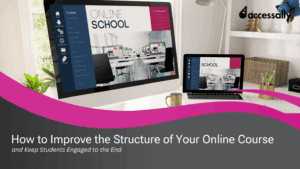Introduction and Overview: Setting the Stage for Your Course Launch
Launching an online course represents an exciting milestone in your business journey, but it can feel overwhelming when you’re staring at a blank launch plan. You’ve put countless hours into creating valuable content, and now it’s time to ensure your course reaches the right audience with the impact it deserves.
A successful course launch isn’t just about sending a few emails or posting on social media – it’s about creating a strategic, well-orchestrated campaign that builds anticipation and demonstrates the true value of your offering. Let’s break this down into manageable pieces so you can approach your launch with clarity and confidence.
Your launch strategy needs to address three core elements: timing, messaging, and delivery channels. The timing of your launch should align with your audience’s needs and schedules – consider factors like seasonal patterns, industry events, and your target audience’s typical buying behavior. Your messaging must clearly articulate your course’s unique value proposition and speak directly to your ideal students’ pain points and aspirations.
The delivery channels you choose will depend on where your audience spends their time and how they prefer to consume information. This might include email sequences, social media campaigns, webinars, or partnership promotions. The key is to select channels that allow you to maintain consistent communication while building genuine connections with potential students.
Throughout this guide, we’ll explore proven marketing strategies and practical planning techniques that will help you create a launch plan that feels authentic to your brand and resonates with your audience. Remember, a successful launch isn’t about perfection – it’s about taking strategic action and maintaining momentum throughout the process.
Foundation Concepts and Planning
Before diving into the tactical elements of your course launch, it’s essential to establish a solid foundation that will support your entire marketing strategy. Let’s break this down into the core components that will set you up for success.
First, identify your course’s unique value proposition – what specific transformation or outcome will your students achieve? Your messaging needs to clearly articulate not just what they’ll learn, but how their lives will improve after completing your course. Think about the pain points you’re addressing and the solutions you’re providing. This understanding will become the cornerstone of all your marketing communications.
Next, develop your course launch timeline. A successful launch typically requires 8-12 weeks of preparation, including content creation, marketing material development, and audience warming. Map out key milestones like your pre-launch content schedule, email sequence timing, and your actual launch window. Remember that rushing this process often leads to missed opportunities and unnecessary stress.
Your launch foundation also needs to include clear metrics for success. Define what a successful launch looks like for you – whether it’s number of enrollments, revenue targets, or student engagement levels. These benchmarks will help you make informed decisions during your launch and guide your marketing efforts.
Consider your tech stack carefully. You’ll need reliable systems for course delivery, payment processing, and email marketing. Test everything thoroughly before your launch begins – there’s nothing worse than technical issues during crucial selling moments. Document your systems and create standard operating procedures for managing enrollments and student communications.


Finally, develop your pricing strategy and offer structure. Will you offer early-bird pricing? Payment plans? Bonus content for fast action takers? Your pricing framework should align with your course’s value and your target market’s expectations. The good news is that you can adjust these elements in future launches based on market response and feedback.
Remember that this foundation phase isn’t just about planning – it’s about creating clarity and confidence in your offer. When you have these elements solidly in place, the actual execution of your launch becomes much more manageable and effective.
Step-by-Step Implementation Guide
Let’s break this down into a clear implementation roadmap that will help you launch your course with confidence and precision. Your launch success depends heavily on careful planning and systematic execution of each phase.
Start by mapping out your pre-launch timeline at least 8-12 weeks before your intended launch date. During weeks 8-12, focus on finalizing your course content and creating compelling marketing materials. This includes your sales page copy, email sequences, and social media content. Remember to batch create your promotional content to maintain consistency in messaging and reduce last-minute stress.
Weeks 4-8 should be dedicated to building anticipation and growing your warm audience. Begin sharing valuable content related to your course topic across your platforms. Consider hosting a free workshop or creating a lead magnet that gives potential students a taste of your teaching style. This period is crucial for establishing your expertise and building trust with your audience.
The real momentum begins 2-4 weeks before launch. Start teasing your course offering through strategic content drops and behind-the-scenes glimpses. Activate your email sequence to nurture your list, sharing student success stories, addressing common objections, and highlighting the transformation your course provides. This is also the perfect time to reach out to potential affiliates and collaboration partners.
During launch week, maintain a strong presence across all platforms. Schedule daily live sessions to answer questions and showcase course features. Keep your communication channels open and responsive. Consider implementing a strategic early-bird pricing structure to encourage quick action from your most engaged followers.
| Feature | Benefit | Use Case |
|---|---|---|
| Drip Content | Increases engagement | Course progression control |
| Quiz & Assessments | Validates learning | Student progress tracking |
| Certificates | Motivates completion | Professional development |
| Community Access | Builds loyalty | Student interaction |
Post-launch activities are equally important for maintaining momentum. Follow up with new students within 24 hours of enrollment, ensuring they can access the course materials easily. Set up a welcome sequence that guides them through the first steps and encourages early engagement. Monitor student progress and gather testimonials from your first cohort – these will be invaluable for future launches.
Throughout the entire process, maintain detailed tracking of your metrics. Monitor email open rates, click-through rates, and conversion percentages. This data will help you optimize future launches and understand which marketing strategies resonated most with your audience. Remember, your first launch is a learning experience – document what works and what needs adjustment for even better results next time.
Advanced Strategies and Techniques
Let’s break this down into advanced marketing techniques that will elevate your course launch beyond the basics. The most successful course creators understand that a sophisticated launch strategy combines multiple touchpoints with strategic timing. Your advanced approach should begin at least 8-12 weeks before your official launch date, giving you ample runway to build anticipation and engage your audience meaningfully.
One powerful advanced technique is implementing a strategic pricing ladder. Rather than offering a single price point, consider creating three distinct tiers with clearly differentiated value propositions. Your entry-level tier might include just the core course content, while your premium tier could offer additional group coaching calls, exclusive workshops, and priority support. This approach not only increases your average transaction value but also gives students choice in their investment level.
Another sophisticated strategy involves creating a carefully orchestrated content sequence leading up to your launch. Begin with valuable pillar content that addresses your audience’s core challenges, then transition into more specific topics that align directly with your course material. This content cascade builds credibility while naturally demonstrating the need for your comprehensive solution. Consider integrating payment solutions that offer flexibility – choosing between platforms like Stripe or PayPal can significantly impact your conversion rates.
Email segmentation becomes crucial at the advanced level. Instead of sending the same messages to everyone, create distinct communication paths based on engagement levels, previous purchases, and specific pain points. For instance, someone who’s attended multiple webinars should receive different messaging than someone who’s only downloaded your lead magnet. This personalized approach typically results in conversion rates 2-3 times higher than generic campaigns.
Consider implementing a strategic affiliate program with tiered commission structures. Your most successful affiliates should receive increased benefits, exclusive promotional periods, and custom landing pages. This not only motivates your partners but also ensures their audience receives messaging that resonates with their specific needs. Remember to provide your affiliates with comprehensive marketing materials and regular performance updates to maintain engagement throughout the launch period.
Common Challenges and Solutions
When launching your online course, you’ll likely encounter several common hurdles – but don’t let these discourage you. Let’s break this down into manageable solutions that will help you navigate these challenges with confidence.
Technical difficulties often create anxiety during launches. Combat this by doing a complete tech run-through at least two weeks before your launch date. Test every element of your course delivery system, payment processing, and email sequences. Have a small group of beta testers go through the entire purchase and access process to identify any potential issues before they affect your actual students.
Marketing message fatigue is another common challenge. Your audience might tune out if you’re constantly promoting your course in the same way. Create varied content types – mix educational posts with behind-the-scenes glimpses, student success stories, and valuable tips. This keeps your audience engaged while building anticipation for your course.
Launch overwhelm affects even experienced course creators. Combat this by creating detailed checklists and breaking your launch into smaller, manageable phases. Focus on one task at a time rather than trying to handle everything simultaneously. Remember that perfection isn’t the goal – progress and connection with your audience are what matter most.
Finally, don’t underestimate the emotional roller coaster of launching. Build a support system of fellow course creators or work with a launch coach who can provide guidance and encouragement. Remember that every challenge you overcome makes you better equipped for future launches. Your experience, even the difficult parts, becomes valuable wisdom for your next course launch.
Best Practices and Optimization
Let’s break this down into the core optimization strategies that will set your course launch up for success. First, focus on creating a robust pre-launch sequence that builds anticipation. Schedule your content drops strategically – aim to release valuable preview content 2-3 weeks before your cart opens to warm up your audience and demonstrate your expertise.
Your landing page needs to be more than just attractive – it needs to convert. Optimize your page load time to under 3 seconds, and place your most compelling testimonials above the fold. Consider using a simple A/B test on your headline and call-to-action buttons to determine which version resonates most with your audience. For payment processing, carefully evaluate whether Stripe or PayPal better suits your business model and target audience’s preferences. You can learn more about making this crucial decision in our comprehensive payment processor comparison guide.
Email sequences are the backbone of your launch strategy. Structure your emails to build momentum – start with educational content, transition to addressing common objections, and conclude with urgency-driven calls to action. Track your open rates and adjust your send times based on when your audience is most engaged. The sweet spot is typically 3-4 emails during cart open week, spaced strategically to maintain enthusiasm without overwhelming subscribers.
Monitor your analytics religiously during the launch. Set up tracking for key metrics like landing page conversion rates, email click-through rates, and cart abandonment statistics. This data will be invaluable for making real-time adjustments and optimizing future launches. Consider using tools like heat mapping to understand how visitors interact with your sales page and identify potential friction points in your checkout process.
Remember that optimization is an ongoing process. Document everything during your launch – what worked, what didn’t, and what surprised you. This information becomes your roadmap for continuous improvement, ensuring each launch performs better than the last.
Case Studies and Examples
Let’s explore some real-world course launch successes that demonstrate effective marketing strategies in action. One of my favorite examples is Sarah, a wellness coach who transformed her in-person yoga practice into a thriving online course. She started with a small email list of 500 subscribers but used a strategic pre-launch sequence to generate buzz. By sharing behind-the-scenes content and student transformation stories, she built anticipation over six weeks, ultimately enrolling 200 students in her first launch.
For comprehensive guidance on course creation platforms, see this detailed analysis from WPBeginner Training Course Showcase.
Another inspiring case is Michael, a photography instructor who initially struggled with his course launch. His first attempt resulted in only 12 enrollments, but after restructuring his marketing approach, his second launch brought in 150 students. The key difference? He implemented a strategic webinar series that demonstrated his teaching style and expertise, while addressing his audience’s specific pain points around manual photography settings.
Emily’s language learning course provides an excellent example of effective launch timing. She noticed her target audience – busy professionals – were most engaged with her content during their lunch breaks. By timing her launch content and promotional emails around these peak engagement periods, she saw a 40% increase in conversion rates compared to her previous launches.
| Feature | AccessAlly | Alternative |
|---|---|---|
| Course Creation | ✅ Advanced drag-drop builder | ❌ Basic editor only |
| Member Management | ✅ Built-in CRM system | ❌ Requires third-party tools |
| Payment Processing | ✅ Multiple gateways supported | ❌ Limited options |
| Integration | ✅ WordPress native | ❌ External platform |
What these success stories share in common is their methodical approach to understanding their audience. They each spent time gathering feedback, testing their messaging, and refining their offer before the full launch. Take James, who teaches digital marketing – he ran a beta course with 25 students, collected detailed feedback, and used those testimonials to power his full launch, which resulted in 400 enrollments.
The most valuable lesson from these cases is that successful launches rarely happen by chance. Each creator developed a clear understanding of their audience’s needs, created content that addressed specific pain points, and built trust through consistent value delivery. Remember that your launch strategy should be as unique as your course – what works for one creator might need adaptation for your specific audience and subject matter.
Future Considerations and Conclusion
As you prepare to launch your online course, remember that success in the digital education space requires both immediate action and long-term strategic thinking. The good news is that your launch plan isn’t set in stone – it’s a living document that should evolve with your business and audience needs. Consider building flexibility into your marketing strategy to accommodate emerging trends, new platforms, and changing student preferences.
Looking ahead, focus on creating systems that can scale with your growing course business. This includes developing automated email sequences that can welcome and nurture future students, establishing clear metrics to measure success beyond just launch day, and building a content calendar that supports ongoing engagement. Think about how you’ll gather and implement student feedback to continuously improve your course content and delivery methods.
Your post-launch strategy is just as crucial as the launch itself. Plan to regularly update your course content, engage with your student community, and maintain the momentum you’ve built during the launch phase. Consider implementing a quarterly review system to assess what’s working, what needs adjustment, and where new opportunities might lie. This could include exploring additional course formats, creating complementary products, or expanding into new market segments.
Remember that your first course launch is just the beginning of your journey as an online educator. Each launch provides valuable insights and data that you can use to refine your approach. Stay connected with your student community, keep learning from their experiences, and remain open to adapting your strategies as needed. Your willingness to evolve and grow alongside your audience will be key to building a sustainable and successful online course business.







